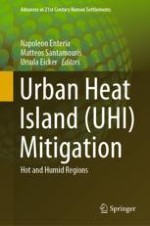2021 | OriginalPaper | Buchkapitel
Monitoring Urban Heat Islands in Selected Cities of the Gulf Region Based on Nighttime MODIS LST Data (2003–2018)
verfasst von : Abdullah Al-Fazari, Ahmed El-Kenawy, Noura Al-Nasiri, Mohamed Hereher
Erschienen in: Urban Heat Island (UHI) Mitigation
Verlag: Springer Singapore
Aktivieren Sie unsere intelligente Suche, um passende Fachinhalte oder Patente zu finden.
Wählen Sie Textabschnitte aus um mit Künstlicher Intelligenz passenden Patente zu finden. powered by
Markieren Sie Textabschnitte, um KI-gestützt weitere passende Inhalte zu finden. powered by
